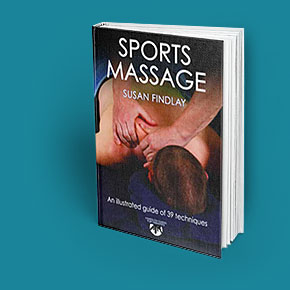Right from the start, I want to make it clear that you can pretty much find studies that will counter act other studies. The intention of this article is to highlight what is being discussed at the moment, and give the opportunity for both sides to be heard. There is, and always has been, an element of controversy when it comes to massage therapy and cancer. Some things we know, and some things we do not.[1]
We are all trying to find new ways to beat cancer, but because it is such a complex disease it is difficult to understand. The unknown element propagates doubt – it opens the door for debate and conversation: how do we effectively treat cancer? Like most health issues, there will usually be a stand-off between conventional medicine and less-traditional therapies. There has never been any doubt in my mind however, that massage therapy cannot cure cancer, nor should it be used as an alternative to traditional therapies. Massage therapy is a brilliant complementary therapy.
However the debate is ongoing, and it is important to fully understand both sets of views. As someone passionate about the benefit of touch, I am fully opposed to the misapplication of Oncology massage and the consequences it may have. I have witnessed insensitive therapy when treating cancer patients: therapy that is too quick and vigorous or simply performed without mindfulness. There is also an issue with how this particular practice is taught. It should be demonstrated face-to-face, it is something that shouldn’t be exclusively taught online, because the sensitivity and delicacy required is usually missing. Both of these issues associated with massage therapy are fine examples of how cancer treatment can be misunderstood and misrepresented in the medical and professional massage world.
I firmly believe in massage therapy as an effective means of treatment, but we must address its unknown aspect. This article aims to shed some light on the debate, and outline what is currently being discussed regarding this divisive topic. It also aims to explore a few questions that are most prominent: Can manual therapies have a positive effect on tissue? Can it help prevent or limit the spread of cancer? And does movement help create a healthier environment? It is worth reiterating my opening point – that for every study in favour of massage therapy, there will be a counter argument out there. It is an ongoing and endless debate, but hopefully the following provides some clarity and reassurance.
As a massage therapist, I am a strong advocate of movement and touch. A tumour’s growth and development can be based on the stiffness of a cell. This stiffness triggers a multitude of responses that aid cancer cell dissemination.[2] The Extracellular Matrix (ECM) is a non-cellular component of the tissue, and when it experiences dysregulation, it can lead to the development of diseases like cancer.[3] Movement is a great way of regulating the relationship between cells and the ECM: the sense of touch enables cells to survive by protruding, adhering and spatially interacting with the surrounding ECM.[4] A functioning system between these ensures an efficient tissue homeostasis, which in turn improves the maintenance of healthy resident cells. If this tissue homeostasis is absent, then it will likely lead to an increased risk in various conditions, including cancer.[5] The calm and soothing movements used in massage therapy are an effective way of regulating the balance between cells, ECM and the tissue homeostasis.
The most effective benefit from applying massage therapy is its ability to reduce pain. The Massage Therapy Foundation describe this as ‘the most common and debilitating symptom… ranging from mild to severe and acute to chronic.[6]’ Conventional methods of cancer treatment are often unsuccessful in fully alleviating patients from the physical pain. As a result, many patients have turned to complementary therapies.[7] Studies have shown that massage therapy significantly reduces cancer pain compared with no massage treatment or conventional care.[8] Associated elements of massage therapy, like stretching, release mediators that help reduce inflammation in connective tissue.[9] To access the full effect, all massage therapy should be applied gently in a mindful way to aid comfort, considering the particular patient and their circumstances. At any stage of treatment, I strongly advise against deep and vigorous movements. Instead, treatment should be guided by the hands – assessing and adapting to what they feel.
Aside from the physical effect of massage therapy, there are proven psychological benefits to help aid cancer patients. As Cancer Research UK suggests, ”One of the main reasons people with cancer use massage is because it helps them feel good.”[10] As we all know, the mental strain of cancer is perhaps as equally destroying as the physical pain itself. The stress is unimaginable, but massage therapy has proven to reduce anxiety and anger among breast cancer patients, alongside longer lasting improvements like reduced depression and increased NK cell numbers.[11]
Like most evidence with this topic, the results vary. There are studies that have shown patients to experience great reductions in anger and feelings of fatigue. Although, these studies have also shown no noticeable changes in depression, anxiety and pain.[12] This is just one example of inconsistent evidence that makes this debate so complex.
The inconsistencies do not stop there. There are a number of theories that identify massage therapy as a way of spreading cancer. First of all, this is not something I agree with, but it is still necessary to consider the evidence and voice this part of the debate. Some studies have suggested that cases of intense compression have caused tumours to spread. Peter Friedl of Radboud University Nijmegen, Netherlands, explained how induced pressure can cause passive position change, and a prolongation of the tumour in just a few seconds.[13] There is, however, a counter argument. Through his study of fascia, Ishrad H. Chaudry identified that it was simply ‘too tough’ for mechanical deformation.[14] Friedl’s theory on compression would also suggest mammograms increase the risk of tumours spreading, due to the intense compression applied. Luckily the compression and methods used in massage therapy are far less-intense, eliminating the risk of tumours experiencing prolongation. I still do not advocate working directly on tumours but sometimes we do not know where they are as is the case in a number of pathologies we work with, there is always an element of the unknown.
A BMC Cancer article has also explored evidence associating massage therapy with tumour dissemination. The case focuses on a 12-year old boy, who underwent massage therapy after swelling of his left knee. Consistent with conventional osteosarcoma, radiography revealed cortical bone destruction, osteoblastic changes, and periosteal reactions. His battle with cancer became progressively worse and unfortunately led to his death 13 months after diagnosis.[15] Despite treading carefully around the topic, the article associates the local dissemination of the tumour with the boy’s massage treatment. It does, however, highlight ‘there is no clear evidence’[16], which makes its conclusions fairly weak and at times tenuous. It also provides no historical understanding of the patient’s condition before he received massage therapy. There is also a noticeable emphasise on the positive introduction of more conventional forms of treatment, like chemotherapy. But it fails to mention that chemotherapy is a treatment that risks cultivating secondary cancers.[17] As we have seen, these sort of inconsistencies and loopholes are present at both ends of the argument.
As someone passionate about Oncology massage training, I will always believe in the value of touch and the benefits of manual therapy. That is not to say that I am unaware or entirely neglect claims of massage therapy as a propagator of cancer. As someone who has witnessed the misuse of oncology massage, it is vital that we remain mindful of our patients and the current research that is available. Although I do not support studies that criticize the massage treatment, I do believe that we must adjust accordingly to ensure that what they claim, does not ever materialize.
- T. Walton, One Massage Study Does Not “Prove” a Point… (Blog), https://www.tracywalton.com/one-massage-study-does-not-prove-a-point/ 2015.
- SE. Reid and S. Zanivan, Tumor stiffness extends its grip on the metastatic microenvironment, Mol Cell Oncol. 2017 Oct 16;4(6):e1372866. doi: 10.1080/23723556.2017.1372866. eCollection 2017.
- Walker C, Mojares E, and A. Hernández, Role of Extracellular Matrix in Development and Cancer Progression, doi: 10.3390/ijms19103028, October, 2018.
- ibid.
- ibid.
- Massage Therapy Foundation, New Research Analysis Indicates Massage Therapy Shows Promise for Pain & Anxiety in Cancer Patients, https://massagetherapyfoundation.org/new-research-analysis-indicates-massage-therapy-shows-promise-pain-anxiety-cancer-patients/
- Meta-Analysis of Massage Therapy on Cancer Pain, DOI:10.1177/1534735415572885, 2015.
- ibid.
- Stretching Impacts Inflammation Resolution in Connective Tissue, DOI:10.1002/jcp.25263, 2016.
- https://about-cancer.cancerresearchuk.org/about-cancer/cancer-in-general/treatment/complementary-alternative-therapies/individual-therapies/massage?_ga=2.260279693.1285414830.1589383016-1053114341.1589383016
- Breast cancer patients have improved immune and neuroendocrine functions following massage therapy. DOI:10.1016/S0022-3999(03)00500-2, 2004.
- Massage interventions and treatment-related side effects of breast cancer: a systematic review and meta-analysis, DOI:10.1007/s10147-013-0635-5, 2014.
- https://mediaspace.illinois.edu/media/t/1_5gqom8t8?fbclid=IwAR1UVvkfmVRzjqRNuEEz3enO1AStdGXT1x9xTZicznaMyy-CUugEcD_clzg
- Chaudhry H, Schleip R, Ji Z, Bukiet B, Maney M, Findley T. Three-dimensional mathematical model for deformation of human fasciae in manual therapy. J Am Osteopath Assoc. 2008 Aug;108(8):379–90. https://www.painscience.com/biblio/fascia-is-too-tough-for-mechanical-deformation.html
- Miwa, S., Kamei, M., Yoshida, S. et al. Local dissemination of osteosarcoma observed after massage therapy: a case report. BMC Cancer 19, 993 (2019). https://doi.org/10.1186/s12885-019-6246-4
- ibid.
- Rheingold SR, Neugut AI, Meadows AT. Therapy-Related Secondary Cancers. In: Kufe DW, Pollock RE, Weichselbaum RR, et al., editors. Holland-Frei Cancer Medicine. 6th edition. Hamilton (ON): BC Decker; 2003. Available from: https://www.ncbi.nlm.nih.gov/books/NBK13999/
- T. Walton, One Massage Study Does Not “Prove” a Point… (Blog), https://www.tracywalton.com/one-massage-study-does-not-prove-a-point/ 2015. ↑
- SE. Reid and S. Zanivan, Tumor stiffness extends its grip on the metastatic microenvironment, Mol Cell Oncol. 2017 Oct 16;4(6):e1372866. doi: 10.1080/23723556.2017.1372866. eCollection 2017. ↑
- Walker C, Mojares E, and A. Hernández, Role of Extracellular Matrix in Development and Cancer Progression, doi: 10.3390/ijms19103028, October, 2018. ↑
- ibid. ↑
- ibid. ↑
- Massage Therapy Foundation, New Research Analysis Indicates Massage Therapy Shows Promise for Pain & Anxiety in Cancer Patients, https://massagetherapyfoundation.org/new-research-analysis-indicates-massage-therapy-shows-promise-pain-anxiety-cancer-patients/ ↑
- Meta-Analysis of Massage Therapy on Cancer Pain, DOI:10.1177/1534735415572885, 2015. ↑
- ibid. ↑
- Stretching Impacts Inflammation Resolution in Connective Tissue, DOI:10.1002/jcp.25263, 2016. ↑
- https://about-cancer.cancerresearchuk.org/about-cancer/cancer-in-general/treatment/complementary-alternative-therapies/individual-therapies/massage?_ga=2.260279693.1285414830.1589383016-1053114341.1589383016 ↑
- Breast cancer patients have improved immune and neuroendocrine functions following massage therapy. DOI:10.1016/S0022-3999(03)00500-2, 2004. ↑
- Massage interventions and treatment-related side effects of breast cancer: a systematic review and meta-analysis, DOI:10.1007/s10147-013-0635-5, 2014. ↑
- https://mediaspace.illinois.edu/media/t/1_5gqom8t8?fbclid=IwAR1UVvkfmVRzjqRNuEEz3enO1AStdGXT1x9xTZicznaMyy-CUugEcD_clzg ↑
- Chaudhry H, Schleip R, Ji Z, Bukiet B, Maney M, Findley T. Three-dimensional mathematical model for deformation of human fasciae in manual therapy. J Am Osteopath Assoc. 2008 Aug;108(8):379–90. https://www.painscience.com/biblio/fascia-is-too-tough-for-mechanical-deformation.html ↑
- Miwa, S., Kamei, M., Yoshida, S. et al. Local dissemination of osteosarcoma observed after massage therapy: a case report. BMC Cancer 19, 993 (2019). https://doi.org/10.1186/s12885-019-6246-4 ↑
- ibid. ↑
- Rheingold SR, Neugut AI, Meadows AT. Therapy-Related Secondary Cancers. In: Kufe DW, Pollock RE, Weichselbaum RR, et al., editors. Holland-Frei Cancer Medicine. 6th edition. Hamilton (ON): BC Decker; 2003. Available from: https://www.ncbi.nlm.nih.gov/books/NBK13999/ ↑

